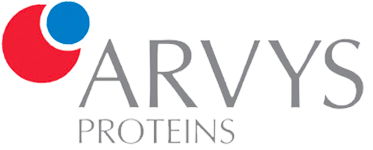
Antibody Development & Production
In the last 30 years, Antibodies had become very important reagents in research, diagnostics, and medicine. This class of molecules are heavily used now in many fields of biomedical research such as immunoassays (Western blots, ELISA, etc.), protein purification, protein identification and protein-protein interaction studies. Many commercial diagnostic kits have antibodies as their critical components. Currently, there are 75 Monoclonal Antibodies or their derivatives approved by the FDA and many more are being tested in clinical studies. Each antibody project requires a customized approach gathering all facts about an antigen and defining the properties of the final antibody. We have a long history in developing and producing antibodies for our clients. We will plan your Antibody project thoroughly to achieve desired outcomes.
PURIFICATION OF ANTIBODIES FROM BIOLOGICAL SOURCES
- all antibody isotypes from any species
- endotoxin removal from antibody solutions
- antibody conjugation to fluorescent dyes or enzymes
- antibody characterization by ELISA and other assays
PRODUCTION OF RECOMBINANT ANTIBODIES IN MAMMALIAN EXPRESSION SYSTEMS BY TRANSIENT OR STABLE TRANSFECTION
PRODUCTION OF MONOCLONAL ANTIBODIES FROM HYBRIDOMA CELL LINES
PRODUCTION OF POLYCLONAL ANTIBODIES
- design of an antigen with immunogenic properties
- antigen generation, production and purification
- analysis of bleeds for specificity by ELISA and/or Western blot
- purification of antibodies from blood plasma
PRODUCTION OF SINGLE CHAIN ANTIBODIES (scFv) and Fab FRAGMENTS IN E.COLI
- design of an expression construct
- expression in E.coli and its optimization
- antibody purification
GENERATION OF Fab AND (Fab)2 FRAGMENTS FROM FULL LENGTH ANTIBODIES
- optimization of enzymatic digestion reaction
- removal of heavy chain fragments
- Fab and (Fab)2 purification
PHAGE DISPLAY FOR GENERATION OF MONOCLONAL ANTIBODIES
- generation of antibody phage display library from infected/diseased patients or antigen-immunized animals
- phage display panning and screening
- sequence analysis
- generation of scFv, Fabs or whole immunoglobulins in various expression
CHARACTERIZATION OF ANTIBODIES FOR SPECIFICITY AND SELECTIVITY
Useful Tools for Antibody Development & Production Project
IgG Concentration CalculatorAntibody-Epitope Prediction
SabPred The Antibody Prediction Toolbox
Selected Latest Developments in Antibody Development & Production
Antibody-guided structure-based vaccines
Peter D. Kwong et al., Semin Immunol., 2020 Aug;50:101428.Abstract
The vaccine field is pursuing diverse approaches to translate the molecular insights from analyses of effective antibodies and their targeted epitopes into immunogens capable of eliciting protective immune responses. Here we review current antibody-guided strategies including conformation-based, epitope-based, and lineage-based vaccine approaches, which are yielding promising vaccine candidates now being evaluated in clinical trials. We summarize directions being employed by the field, including the use of sequencing technologies to monitor and track developing immune responses for understanding and improving antibody-based immunity. We review opportunities and challenges to transform powerful new discoveries into safe and effective vaccines, which are encapsulated by vaccine efforts against a variety of pathogens including HIV-1, influenza A virus, malaria parasites, respiratory syncytial virus, and SARS-CoV-2. Overall, this review summarizes the extensive progress that has been made to realize antibody-guided structure-based vaccines, the considerable challenges faced, and the opportunities afforded by recently developed molecular approaches to vaccine development.
Read more
Using Antibody Arrays for Biomarker Discovery
Shuhong Luo et al., Methods Mol Biol., 2021;2237:237-245.Abstract
Biomarkers for diseases are important for the development of clinical diagnostic tests and can provide early intervention for cancer or cardiovascular patients. Over the past decade, antibody array technology has achieved significant technological improvement in the quantitative measurement of more than a thousand proteins simultaneously and has been utilized to screen and identify unique proteins as disease biomarkers. However, few biomarkers have been translated into clinical application. This chapter will discuss the protocol for the screening and validation of unique proteins that create a new avenue for biomarker discovery.
Read more
Purification of animal immunoglobulin G (IgG) using peptoid affinity ligands
Hannah Reese et al., Biotechnol Prog., 2020 Jul;36(4): e2994.Abstract
The availability of highly pure animal antibodies is critical in the production of diagnostic tools and biosensors. The peptoid PL16, previously isolated from an ensemble of peptoid variants of the IgG-binding peptide HWRGWV, was utilized in this work as affinity ligand on WorkBeads resin for the purification of immunoglobulin G (IgG) from a variety of mammalian sources and chicken immunoglobulin Y (IgY). The chromatographic protocol initially optimized for murine serum and ascites was subsequently employed for processing rabbit, goat and sheep, donkey, llama, and chicken sera. The PL16-WorkBeads resin proved able to recover all antibody targets with values of yield between 50 and 90%, and purity consistently above 90%. Notably, PL16 not only binds a broader spectrum of animal immunoglobulins than the reference ligands Protein A and G, but it also binds equally well with all their subclasses. Unlike the protein ligands, in fact, PL16 afforded excellent values of yield and purity of mammalian polyclonal IgG, namely murine (47 and 94%), rabbit (66.5 and 91.7%), caprine IgG (63 and 91-95%), donkey, and llama (93 and 97%), as well as chicken IgY (42 and 92%). Of notice, it is also the ability of PL16 to target monomeric IgG without binding aggregated IgG; when challenged with a mixture of monomeric and aggregated murine IgG, PL16 eluted <3% of fed aggregates, against 11-13% eluted by Protein A and G. Collectively, these results prove the potential of the proposed peptoid ligand for large-scale purification of animal immunoglobulins.
Read more




